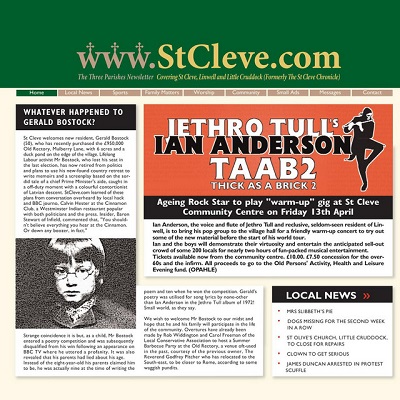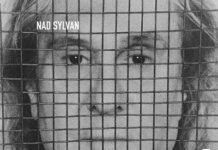Back in high school, I used to get in arguments about rock and roll all the time. When it came to what was going on in rock and roll, I was a recognized authority in my neighborhood, which meant there was always someone who thought he knew more. One day, I encountered friends and friends of friends behind the gym, and one of them was going on and on about a Jethro Tull concert he had just seen. “He was jumping around with that flute, standing on one leg and shaking his head. It was amazing.”
I had missed the Jethro Tull concert, but I knew exactly who he was talking about. “Yeah, that Ian Anderson is amazing,” I announced boldly.
“Who?” the concert goer asked.
I looked him over with a puzzled eye. “The lead singer of Jethro Tull. The flute player on one leg. The guy you were just talking about.”
The concert goer scoffed and burst out with laughter. “No, that’s Jethro Tull, man. I don’t know who Liam whatever is, but he ain’t no Jethro Tull. What an idiot.” And off he went, annoyed, I suppose, by my disruption.
Looking back, I can certainly understand the confusion. Like Alice Cooper — a band that became a person — Jethro Tull and Ian Anderson are fairly interchangeable…unless you have closely followed both his and the band’s career in the last few years.
Perhaps as a result of the confusion — and perhaps tired of being called “Jethro Tull” one too many times — Ian Anderson has made a handful of solo albums. Walk Into Light, his first step away from Tull in the 1983, was a commendable departure. Anderson’s more recent ventures, notably 2000’s The Secret Language Of Birds and 2003’s Rupi’s Dance, are a little closer to home — if home were Jethro Tull — but not in a blatant sense.
Which brings us to Ian Anderson’s first new studio album in nine years, Thick As A Brick 2. Yes, you read that right. It’s the sequel to Thick As A Brick, the 1972 Jethro Tull concept album. Like other sequels, it includes the stars of the original — Ian Anderson and the story’s “precocious schoolboy” Gerald Bostock, aged 50. But there are a few missing members of the original album, namely Jethro Tull.
Keyboardist John O’Hare and bassist David Goodier, who have been playing with both Ian Anderson and Jethro Tull for the past few years, are on TAAB2. But guitarist Martin Barre, the longest standing member of Tull aside from Anderson, and drummer Doane Perry, with the band since 1984, are conspicuously absent. Yet, Jethro Tull is ubiquitous throughout Thick As A Brick 2, despite what it says on the cover’s spine and front cover: Jethro Tull’s Ian Anderson.
As Anderson told me, Thick Is A Brick 2 is the singer having a “Roger Waters moment,” meaning the man, at this stage in his career, would like a little marquee recognition for his years of service as the leader, architect, figurehead, singer, songwriter, acoustic guitarist, arranger, frontman and face of Jethro Tull. It’s a shame to not hear Barre’s trademark leads on Thick As A Brick 2, but that doesn’t take away from the fact that this is the best record Ian Anderson, Jethro Tull or Jethro Tull’s Ian Anderson have made in 25 years.
So where did Gerald Bostock land after 40 years? According to Anderson, he rode the wave of the times — exploiting capitalism, fighting wars and finally succumbing to an ordinary life, leaving the what-ifs, maybes and might-have-beens at the door. Like its predecessor, Thick As A Brick 2 is supposedly one long song, but there are, as Anderson described to me, 17 ID points. In this case, the ID points have titles and sound very much like individual songs for all practical purposes; however, they merely slices of a bigger pie.
The lift-off of “Pebbles Thrown” opens the gate to the taunt and tame reverie of “From A Pebble Thrown.” An engaging instrumental interlude later, “Might-Have-Beens” is a bit of poetic narration from Anderson — something that pops up throughout TAAB2 — that leads to the Gerald The Banker segment. The acoustic “upper Sixth Loan Shark” segues nicely into “Banker Bets, Banker Wins,” a mid-tempo epic with a Jethro Tull snarl. Even more remarkably is how Anderson’s wimpy declaration on “Swing It Far” morphs into a sordid confession of confusion.
As the Hammond fires up, Gerald goes from homelessness to Military Man. “Old School Song” marches forth before “Wooten Bassett Town” gives way to Gerald The Chorister where he asks patrons to “give till it hurts.” Gerald: A Most Ordinary Man begins with a more playful and cheeky narration from Anderson before erupting into the heavy-handed “Shunt And Shuffle,” featuring some heavy flute work. It’s at this juncture where the album assumes a pastoral feel via A Change Of Horses. A marvelous passage leads to a metamorphosis for Gerald, a realization that things that don’t need to be all that complex and competitive.
Guitarist Florin Ophale, a well-seasoned musician who’s played with Anderson since 2003, hones in on the spaces and capably fills in where and when he can. Hardcore Tull fans may dismiss the guitarist and wonder why Martin Barre couldn’t have played the parts. But then this wouldn’t be an Ian Anderson album now, would it? To his credit, Orphale counters Anderson with edgy precision without straying too far out of range. His fretwork on “Kismet In Surburbia” is a chunky reminder of how a great riff is typically at the root of Anderson’s best songs.
“What-ifs, Maybes and Might-Have-Beens” is a magnificent reprise of the entire piece with a sprinkling of the original 1972 TAAB thrown in for curiosity seekers, naysayers and old timers who still believe Ian Anderson and Jethro Tull are one and the same. Listening to the 5.1 Steven Wilson mix, watching studio and interview footage, and seeing a wide-eyed Anderson recite the lyrics of Thick As A Brick 2 in different settings without the music — it’s a challenge discerning which is which and why it even makes a difference. Could it be that at one moment in time during my high school years, both the unnamed Jethro Tull concert goer and myself were right? Or is it a cosmic coincidence some 40 years later? Really don’t mind if I sit this one out.
~ Shawn Perry




















